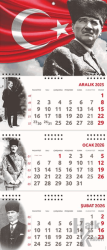-
650,00TL 199,00TLİNDİRİM %69
-
-
300,00TL 199,00TLİNDİRİM %33
-
800,00TL 399,00TLİNDİRİM %50
-
250,00TL 149,00TLİNDİRİM %40
Arama sonucunda hiçbir kayıt bulunamadı.
İsterseniz aşağıdaki formu kullanarak daha detaylı arama yapabilirsiniz.
İsterseniz aşağıdaki formu kullanarak daha detaylı arama yapabilirsiniz.
0







